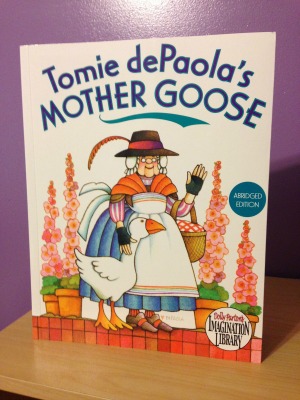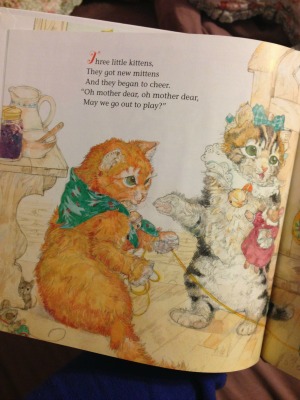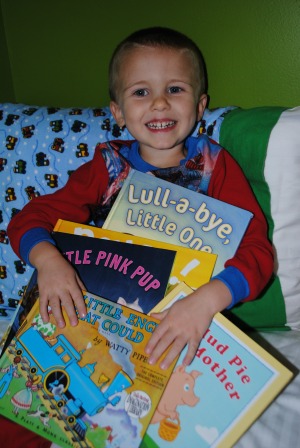Chances are, if you have a child under the age of two in your home it might seem an easier task to herd a pack of wild cats than to read a book to your child. I have been there my friend. I can assure you, putting the extra effort in now, a few minutes at a time, to foster a love of reading will have your three-year-old sitting for chapter books in no time! Maybe that is a bit of an exaggeration but it will help foster a love for books and learning that will serve your child well in life and preparing for school years ahead.

If you have a newborn to two-year-old at home – what are some of the things you notice them doing during the day?
Babble
Explore
Play with toys
“Sing” songs
Understand some words
Listen to music
Imitate adults or siblings
If you answered yes to one or more of the above – CONGRATULATIONS! You are well on your way to raising a literate child! Each of these represents a significant part of early childhood literacy. Trust me, your little ones are busy learning language and the earlier you begin to read to them, the better language and reading skills they will develop. First, let’s talk about which books are appropriate for your newborn or toddler:
Thick sturdy cover and pages
Small size, for little hands
Bright colorful pictures
Simple geometric shapes
Clear pictures
Pictures of human faces
Few words
Nursery rhymes
Board books with easy to see pictures are excellent for a baby, with high contrast between the object and the background.

As you begin to reach the toddler years, you may introduce stories with more detail and pictures that relate to things such as animals and dressing. One of the best things about the Imagination Library is that all books are hand selected by professionals as age appropriate for your child so it takes the guessing game out of finding the right book! Have you registered yet? If not visit http://tinyurl.com/knoxvilleIL
Now that you have selected the right book, here are some tips on reading to young children and ensuring a positive experience is had by all:
■ TIP 1 — Pick a time when you and your child are in a good mood, ready to enjoy each other. Try to pick a time when your child is quietly alert, not too tired and not too active. Each child is different so the best time for you and your child will vary but might be first thing in the morning or right before bed.
■ TIP 2 — Point to the pictures and talk in your most natural and cheerful voice. Watch where your child points or looks and talk about those pictures. After you name the item in the picture, talk about it: “Apple. A red apple. Hmmmm, I love apples. You can only eat apples when they are mashed up into apple sauce.” You are adding to your baby’s vocabulary and showing him the “conversation game” of back and forth.
■ TIP 3 — Talk and have fun. If your baby likes to be held, snuggle up and read a book together. You can lie beside your baby and look at a book together. Find a spot in your home where you and your baby are comfortable reading together — a chair, on a bed, on a blanket, or on the floor.
■ TIP 4 — Watch what baby does. Babies like to play with books. They like to chew on them, throw them down and play with them like a toy. That is how children get to know books at this age. If your baby just wants to play with the book, let them, it’s OK. Try reading it together later. When a baby holds a board book it typically goes straight to their mouth. Most often, the reaction of a parent is to say “no.” In order to maintain a positive experience slowly take the book away from his/her mouth, turning the pages, and say, “Let’s see what’s in this book.” Remember, adults see books as special and it is only natural for us to protect them. But for babies they are toys.
■ Tip 5 — Read with your baby EVERY DAY! Remember the suggestion from the first post in this series – read to your child 20 minutes a day, even if they aren’t all in a row. Watch what your baby does. Let your baby play with the book. If your baby gets upset or cranky, stop for a while. It’s a simple rule of thumb – find time every day to share books with your baby.

Now that you are an expert in herding cats, I mean reading to your baby, the next post in our series will identify six essential skills your child will need before learning to read. Tell us in the comments below:
- Which tip has helped you the most?
- What are your challenges in getting 20 minutes of reading in each day?
 About Christie
About Christie
Christie Knapper and her husband Wade met while in school at Maryville College and after getting married in 2006, chose to call Knoxville home. They have two children, Joel (5) and Camryn (3). Christie has served on the board for Imagination Library since 2010 and recently helped form the Circle of Friends Leadership Council at the Knoxville Zoo. Earning the title of Woman of the Year in 2013 for the Leukemia & Lymphoma Society, Christie works hard to support many local charitable organizations including The University of Tennessee Medical Center where her youngest child spent 18 days in the NICU upon premature birth. Perhaps one of her biggest most recent accomplishment is the launch of her own marketing company, Bridge Marketing.



















